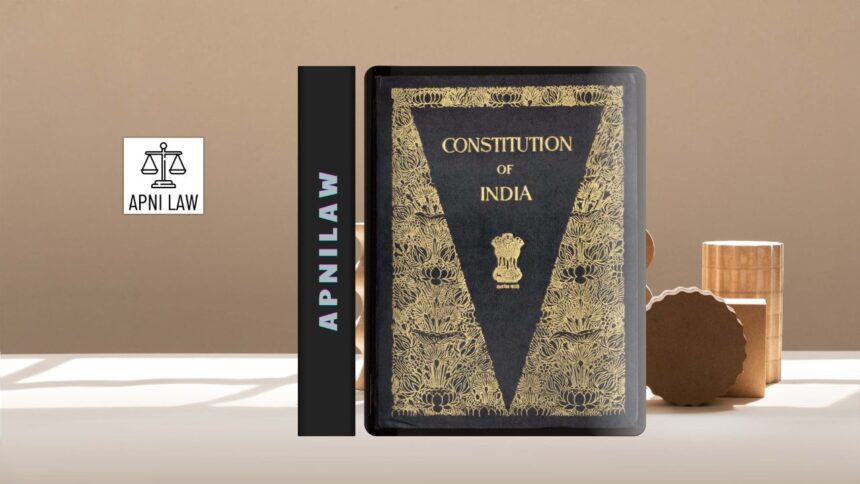The Constitution of India has grown stronger with amendments that respond to political, economic, and social challenges. Each major change reflects the spirit of democracy and adapts governance to the needs of the people. Among the most influential amendments to the Indian constitution are the 52nd, 61st, 73rd, 74th, 86th, 101st, and 103rd. They address issues ranging from defections and voting rights to education, taxation, and reservations. These reforms demonstrate how the Constitution evolves to strengthen democracy, promote justice, and ensure development for all citizens.
What Was the Purpose of the 52nd Amendment?
The 52nd Amendment of 1985 introduced the Tenth Schedule, popularly known as the anti-defection law. Its main purpose was to prevent the frequent defections of legislators that destabilized governments during the 1970s and 1980s. Under this law, Members of Parliament or State Legislatures could be disqualified if they defected to another party, violated the party whip, or engaged in political horse-trading.
The amendment gave the Speaker or Chairman of the House the authority to decide on disqualifications. While their decisions remain subject to judicial review, the law has been effective in curbing political opportunism. However, critics argue that it restricts the independence of legislators and strengthens the grip of party leadership. Despite these criticisms, the 52nd Amendment remains essential for maintaining stability and accountability in Indian politics.
How Did the 61st Amendment Empower Young Voters?
The 61st Constitutional Amendment of 1988 lowered the voting age in India from 21 years to 18 years. By amending Article 326, the government expanded the electoral base and gave young citizens the power to influence governance.
This change recognized the growing maturity, awareness, and responsibility of India’s youth. It allowed millions of first-time voters to participate in shaping national and state policies. The reform also strengthened inclusivity and representation in democracy. Since then, youth participation has become a powerful force in elections, making the 61st Amendment a landmark in empowering young citizens.
How Did the 73rd Amendment Transform Rural Governance?
The 73rd Amendment of 1992 gave constitutional status to Panchayati Raj Institutions. By adding Part IX and the Eleventh Schedule, it established a three-tier system of governance: village panchayats, intermediate panchayats, and district panchayats.
This amendment mandated regular elections, reservations for Scheduled Castes, Scheduled Tribes, and women, as well as fixed terms and financial powers. It empowered local governments to handle issues such as rural development, health, education, and infrastructure.
By decentralizing power, the amendment strengthened grassroots democracy. Villagers gained a direct role in decision-making and development. Although challenges like corruption and resource shortages continue, the 73rd Amendment remains a milestone in making governance more participatory and accountable.
Why Was the 74th Amendment Important for Urban Governance?
The 74th Constitutional Amendment Act of 1992, which came into effect in 1993, gave urban local bodies constitutional recognition. It introduced Part IXA and the Twelfth Schedule, making municipalities vital institutions of local governance.
The amendment created three types of urban local bodies: Nagar Panchayats for transitional areas, Municipal Councils for smaller towns, and Municipal Corporations for large cities. It required regular elections, fixed tenure, and reservations for SCs, STs, and women. In larger cities, ward committees were made compulsory to promote citizen participation.
The 74th Amendment was crucial in addressing urban challenges such as housing, sanitation, planning, and economic growth. As Indian cities expanded rapidly, this amendment ensured that governance reached people at the local level. It continues to be the backbone of urban self-governance, though uneven implementation across states remains an issue.
What Did the 86th Amendment Do for Education Rights?
The 86th Amendment of 2002 transformed education by making it a fundamental right. It inserted Article 21A, guaranteeing free and compulsory education to all children between 6 and 14 years.
The amendment also changed Article 45, focusing it on early childhood care and education up to the age of six. Additionally, it inserted a new duty under Article 51A, requiring parents to ensure their children receive education.
This historic amendment laid the foundation for the Right to Education (RTE) Act of 2009. Millions of children, particularly from disadvantaged backgrounds, gained access to schooling. While challenges remain in ensuring quality education, teacher training, and infrastructure, the amendment marked a bold step toward equality and social justice.
How Did the 101st Amendment Reshape India’s Tax System?
The 101st Constitutional Amendment of 2016 brought about one of India’s biggest economic reforms: the Goods and Services Tax (GST). It replaced multiple indirect taxes with a unified tax system, simplifying compliance and reducing the burden on businesses.
This amendment empowered both the Centre and the states to levy GST and created the GST Council to oversee tax policies, rates, and exemptions. By creating a single national market, GST reduced barriers to trade and eliminated the cascading effect of taxes.
Though the transition faced challenges such as compliance difficulties and technical glitches, GST has streamlined revenue collection and improved transparency. The 101st Amendment thus reshaped fiscal federalism and modernized India’s tax structure.
What Was the Objective of the 103rd Amendment?
The 103rd Amendment of 2019 introduced 10% reservation in government jobs and educational institutions for the Economically Weaker Sections (EWS) of the general category. For the first time, economic status became the basis for affirmative action in India.
The amendment aimed to support disadvantaged citizens who were not covered under the existing reservation system for Scheduled Castes, Scheduled Tribes, and Other Backward Classes. It sought to create greater equality of opportunity by recognizing economic hardship as a barrier to advancement.
Although the amendment has been debated on grounds of equality and constitutionality, it represents a significant shift in India’s social justice framework. By extending support beyond caste-based criteria, the 103rd Amendment acknowledged economic deprivation as a major concern.
For any specific query call at +91 – 8569843472
Conclusion
Each of these amendments reshaped India’s constitutional and democratic framework in profound ways. The 52nd Amendment curbed political defections, the 61st Amendment empowered youth, and the 73rd and 74th Amendments brought governance closer to people in villages and cities. The 86th Amendment made education a right, the 101st Amendment modernized taxation through GST, and the 103rd Amendment extended reservations to economically weaker sections.
Together, these reforms highlight the adaptability of the Indian Constitution. They demonstrate its ability to address challenges of governance, equality, and development while staying rooted in democratic values. These amendments remain landmarks not only for their legal significance but also for their lasting impact on India’s political, social, and economic landscape.








